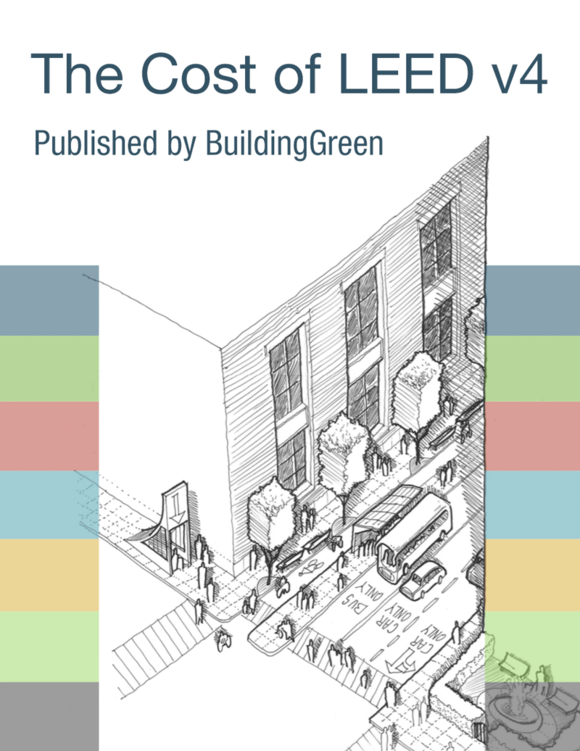Requirements
Meet uplight and light trespass requirements, using either the backlight-uplight-glare (BUG) method (Option 1) or the calculation method (Option 2). Projects may use different options for uplight and light trespass.Meet these requirements for all exterior luminaires located inside the project boundary (except those listed under “Exemptions”), based on the following:
- the photometric characteristics of each luminaire when mounted in the same orientation and tilt as specified in the project design; and
- the lighting zone of the project property (at the time construction begins). Classify the project under one lighting zone using the lighting zones definitions provided in the Illuminating Engineering Society and International Dark Sky Association (IES/IDA) Model Lighting Ordinance (MLO) User Guide.
Additionally, meet the internally illuminated signage requirement.
Uplight
Do not exceed the following luminaire uplight ratings, based on the specific light source installed in the luminaire, as defined in IES TM-15-11, Addendum A.
Table 1. maximum uplight ratings for luminaires
MLO lighting zone |
Luminaire uplight rating |
LZ0 |
U0 |
LZ1 |
U1 |
LZ2 |
U2 |
LZ3 |
U3 |
LZ4 |
U4 |
OR
Option 2. calculation method
Do not exceed the following percentages of total lumens emitted above horizontal.
Table 2. maximum percentage of total lumens emitted above horizontal, by lighting zone
MLO lighting zone |
Maximum allowed percentage of total luminaire lumens emitted above horizontal |
LZ0 |
0% |
LZ1 |
0% |
LZ2 |
1.5% |
LZ3 |
3% |
LZ4 |
6% |
AND
Light trespass
Do not exceed the following luminaire backlight and glare ratings (based on the specific light source installed in the luminaire), as defined in IES TM-15-11, Addendum A, based on the mounting location and distance from the lighting boundary.
Table 3. maximum backlight and glare ratings
|
MLO lighting zone |
Luminaire mounting |
LZ0 |
LZ1 |
LZ2 |
LZ3 |
LZ4 |
|
Allowed backlight ratings |
> 2 mounting heights from lighting boundary |
B1 |
B3 |
B4 |
B5 |
B5 |
1 to 2 mounting heights from lighting boundary and properly oriented |
B1 |
B2 |
B3 |
B4 |
B4 |
0.5 to 1 mounting height to lighting boundary and properly oriented |
B0 |
B1 |
B2 |
B3 |
B3 |
|
B0 |
B0 |
B0 |
B1 |
B2 |
|
Allowed glare ratings |
Building-mounted > 2 mounting heights from any lighting boundary |
G0 |
G1 |
G2 |
G3 |
G4 |
Building-mounted 1–2 mounting heights from any lighting boundary |
G0 |
G0 |
G1 |
G1 |
G2 |
Building-mounted 0.5 to 1 mounting heights from any lighting boundary |
G0 |
G0 |
G0 |
G1 |
G1 |
Building-mounted |
G0 |
G0 |
G0 |
G0 |
G1 |
All other luminaires |
G0 |
G1 |
G2 |
G3 |
G4 |
The lighting boundary is located at the property lines of the property, or properties, that the LEED project occupies. The lighting boundary can be modified under the following conditions:
- When the property line abuts a public area that includes, but is not limited to, a walkway, bikeway, plaza, or parking lot, the lighting boundary may be moved to 5 feet (1.5 meters) beyond the property line.
- When the property line abuts a public street, alley, or transit corridor, the lighting boundary may be moved to the center line of that street, alley, or corridor.
- When there are additional properties owned by the same entity that are contiguous to the property, or properties, that the LEED project is within and have the same or higher MLO lighting zone designation as the LEED project, the lighting boundary may be expanded to include those properties.
Orient all luminaires less than two mounting heights from the lighting boundary such that the backlight points toward the nearest lighting boundary line. Building-mounted luminaires with the backlight oriented toward the building are exempt from the backlight rating requirement.
OR
Option 2. calculation method
Do not exceed the following vertical illuminances at the lighting boundary (use the definition of lighting boundary in Option 1). Calculation points may be no more than 5 feet (1.5 meters) apart. Vertical illuminances must be calculated on vertical planes running parallel to the lighting boundary, with the normal to each plane oriented toward the property and perpendicular to the lighting boundary, extending from grade level to 33 feet (10 meters) above the height of the highest luminaire.
Table 4. maximum vertical illuminance at lighting boundary, by lighting zone
MLO lighting zone |
Vertical illuminance |
LZ0 |
0.05 fc (0.5 lux) |
LZ1 |
0.05 fc (0.5 lux) |
LZ2 |
0.10 fc (1 lux) |
LZ3 |
0.20 fc (2 lux) |
LZ4 |
0.60 fc (6 lux) |
AND
Internally illuminated exterior signage
Do not exceed a luminance of 200 cd/m2 (nits) during nighttime hours and 2000 cd/m2 (nits) during daytime hours.
Exemptions from uplight and light trespass requirements
The following exterior lighting is exempt from the requirements, provided it is controlled separately from the nonexempt lighting:
- specialized signal, directional, and marker lighting for transportation;
- lighting that is used solely for façade and landscape lighting in MLO lighting zones 3 and 4, and is automatically turned off from midnight until 6 a.m.;
- lighting for theatrical purposes for stage, film, and video performances;
- government-mandated roadway lighting;
- hospital emergency departments, including associated helipads;
- lighting for the national flag in MLO lighting zones 2, 3, or 4; and
- internally illuminated signage.



